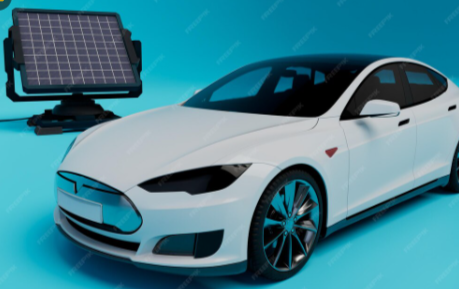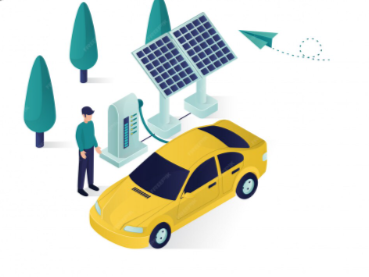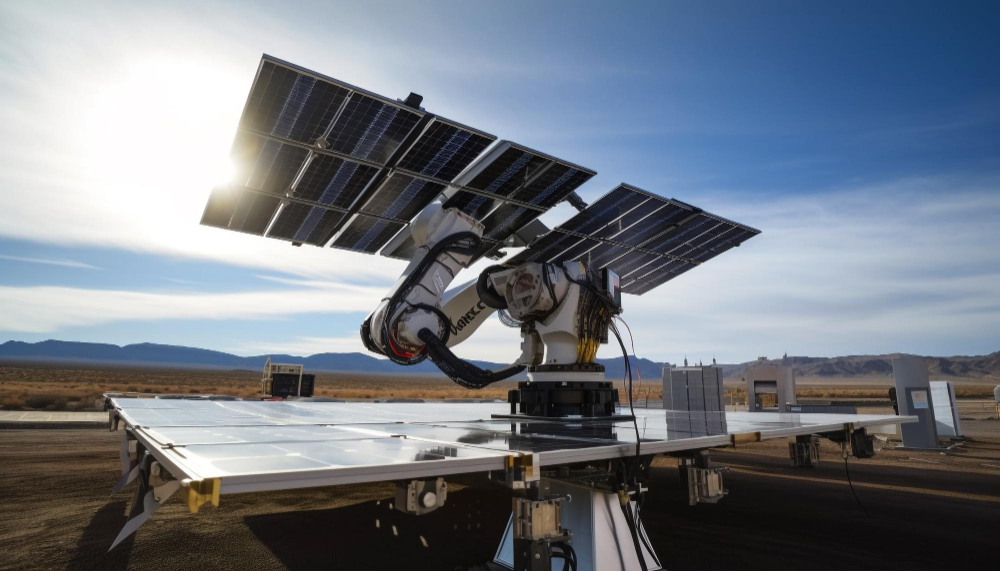
A telemetry solar car is a solar car with technology that extracts and transmits real-time data related to the performance of the automobile. Among the information is battery power, consumption of solar energy, speed, and the temperature of the motor. This will enable engineers, drivers, and teams to keep an eye on car performance as it goes on the road, even at a distance.
Smart and efficient solar cars can be implemented through the use of telemetry. Not only does his technology enable better management of energy, but it also helps to avoid breakdowns and allows safer driving. It is an important feature of solar car racing, research activities, and clean transport creation.
With the world turning towards environment-friendly solutions, the integration of solar power with the systems of intelligent monitoring is gaining increased importance. In this article, we will look at how telemetry operates in solar cars, its significance, and where this powerful pairing can lead in the future.
What Is a Telemetry Solar Car?
A telemetry solar car is an automobile that operates on sunlight energy and has telemetry units that regulate the recovery and transmission of data continuously. Telemetry is the technology that enables people to observe the performance of the vehicle without physically being inside or in the vicinity of the vehicle.
Important information to be tracked using telemetry in a solar car may include:
- How much solar energy is being collected
- The current charge of the battery
- The temperature of the motor and electronics
- The speed, the location, and the use of energy of the car
This data is converted to wireless transmission to a computer or mobile device, where there is a dashboard or control panel view. It is through this information that teams can make fast decisions, rectify errors early on as well and enhance the overall performance of the car.
Key Components of a Telemetry Solar Car:
- Sensors – Measure speed, voltage, temperature, and energy flow
- Data Logger – Stores and organizes the collected data
- Communication System – Sends the data to a remote server or monitoring device
- User Interface – A screen or software where users view and analyze the data
Simply put, telemetry provides the functions of the brain and nervous system of the solar car. It binds it all together and assists the car to work more intelligently instead of harder.

How Telemetry Works in Solar Cars
The method used by telemetry in solar cars is that the information that is monitored in the various components of the car is sent to a distant device, where they are monitored. It occurs in real time so teams can observe what is happening inside the vehicle as it is driving-even when they are not nearby.
Here is a step-by-step analysis.
Data Collection and Monitoring
Inside the solar car, there are multiple sensors placed on key components like the motor, battery, solar panels, and wheels. These sensors track:
- Battery charge and health
- Solar energy input and output
- Temperature of key parts
- Speed and GPS location
- Power usage by the motor
The information acquired provides a full indication of the vehicle’s performance at any given instant.
Real-Time Data Transmission
After the information is gathered, it gets communicated to a computer, tablet, or smartphone wireless. This can be accomplished using:
- Wi-Fi or BT (short)
- GSM or mobile networks (long range)
- Radio or satellite communication in remote areas
The information appears in a viewable format on a dashboard, and hence the team can swiftly respond whenever something goes amiss or needs to be rectified.
Decision-Making and Performance Optimization
The team will be able to come up with smarter decisions with access to live data. For example:
- They can slow down or even change the road in case the battery is dying too quickly.
- If a part is overheating, they can stop the car before it breaks
- If the sunlight is low, they can manage energy use more carefully
This leads to better performance, longer driving time, and safer operation — especially during long-distance races or testing sessions.

Benefits of Telemetry in Solar Vehicles
Telemetry contributes a great benefit to the solar car since it will make it more efficient, safer, and more manageable. It enables the groups to know the conditions of the car in real-time and act accordingly using veracious data. The significant rewards of using telemetry in solar-powered vehicles are as follows.
Improved Efficiency
Telemetry aids in the surveillance of the way solar energy is amassed, preserved, and operationalized. This enables the team to:
- Optimize energy use during different road or weather conditions
- Track battery charge and avoid overuse
- Adjust driving behavior to extend range
By improving energy efficiency, telemetry helps solar cars run longer and perform better.
Enhanced Safety
With telemetry, any problems can be detected early. For example:
- In case the motor or the battery becomes overheated, an alarm is sent out by the system
- When one part is not functioning properly as anticipated, the team can take measures before it can cause harm
- Real-time monitoring nips accidents or unforeseen breakdowns
This makes the car safe even when it is being driven for long distances or when racing.
Easier Maintenance and Diagnostics
All the performance data are kept in the telemetry systems, and they come in handy in:
- Diagnosing issues after a drive
- Planning maintenance before parts wear out
- Understanding long-term trends and best design
It lessens guesswork, and it is simpler to keep the car in great condition.
Applications in Research, Education, and Industry
Solar car telemetry is not only applied in the monitoring of performance. It is also important in research, training, and even clean transport technology. This is how it is changing the world in various disciplines.
Research and Innovation
Telemetry enables researchers to gather real-life data regarding energy consumption, efficiency, and behaviours of the system. This helps them:
- Test new solar technologies
- Improve battery performance
- Develop better control systems for solar vehicles
Telemetry has been able to offer accurate and persistent data that is needed to enhance the designs of solar cars and develop future energy interventions.
Educational Projects and Competitions
A number of schools and various universities construct solar cars in science, engineering, or environmental programs.
- Check cars’ making practices and races
- Examine results and improve results
- Get to know how data science, clean energy, and electronics are applied in the real world
Telemetry is also critical in solar car racing, where teams often race for thousands of kilometres across deserts in the World Solar Challenge.
Industrial and Commercial Use
With the increasing need to have clean transportation, companies are investigating how solar technology can be commercialized. Telemetry is used to:
- Test prototype solar vehicles
- Track performance in different environments
- Become safe and predictable, and put products in the market. Standardize operations before putting products in the market
It is also used in the management of the fleet, where it gives live reports on the condition, position, and energy consumption.
Challenges and Future of Telemetry in Solar Cars
Although the telemetry has numerous advantages attached to solar cars, it does have a few challenges as well. These are faults that should be rectified to render the type of technology even more reliable, accessible, and scalable in the future.
Current Challenges
1. Connectivity Limitations
Solar cars usually work in isolated regions where they experience fewer people, or even in long-distance races. Where such is the case, the balance internet or network connectivity might not be stable. In the absence of a connection, there is a possibility of loss or time delay in data transmission.
2. Data Management
Large quantities of data are produced by a telemetry system. Otherwise, it may cause a storage or processing problem. Efficient software and hardware are needed to organize, filter, and analyze huge pieces of real-time data.
3. Price and Complaint
The cost of installing high-quality telemetry systems may be a costly affair. The sensors, transmission devices, and data analysis devices can be prohibitive in their cost, especially when it comes to small teams or small educational projects.
4. Security and privacy of data
Transfer of information using wireless links exposes risks to the security of information by unauthorized means or even the theft of information. It must be secure; security, such as the use of encryption and secure servers, is required, but may be complex for the system.
The Future of Telemetry in Solar Cars
Nonetheless, there are bright perspectives on the telemetry of solar cars. As technological advancement continues, we will see:
- Dialing connectivity, speedier and less fickle wireless transmission over 5G and satellites
- Smart data analysis achieved through artificial intelligence and machine learning
- Smaller, less-expensive sensors, which can turn telemetry into accessible technology in more schools, startups, and research groups
- Connection to intelligent infrastructure, including a solar charging station and a traffic system
With the solar and electric vehicle growing in each other’s teeth, telemetry will play a bigger and better role, positioning the stylish, safe, and intelligent transportation systems.

Conclusion: A Smarter Path Toward Green Mobility
Telemetry is changing the way solar cars are constructed, operating, and enhanced. It helps teams make wiser decisions, keeping their vehicles safely on the road by giving them real-time data about performance, energy consumption, and the health of the system.
Using telemetry allows people to see how solar cars behave in reality: it is applied to school projects and to major research and commercial testing. It makes innovations and strengthens safety, and is at the forefront of the future of clean transportation.
With further improvement of technology, telemetry systems will be quicker, smarter, and user-friendly. This will create new directions toward the sustainability of mobility and contribute to the process of becoming a more connected and environmentally-friendly world.
Frequently Asked Questions (FAQs)
1. What is a solar car telemetry?
Telemetry in a solar car is a mechanism where there is a collection of real-time data on components of the vehicle,i.e., battery, motor, and solar panels, and this information is transmitted to a remote computer or device where monitoring and analysis are conducted.
2. Why telemetry in the case of solar vehicles?
Telemetry assists in checking the performance, enhancing energy management, and addressing other issues at an early stage. It enables teams to make more effective decisions in testing or racing and keeps the car safe and running smoothly.
3. What Data is collected by a telemetry system?
An average telemetry system can be used to measure battery voltage, solar energy input, temperature, speed, GPS location, and motor performance. This information assists in understanding the general state of the vehicle and its efficiency.
4. Is it possible to carry out commercial solar vehicle telemetry?
Am I right, telemetry can be helpful both in research and business uses? It can monitor the performance of the vehicles, enhance their maintenance, and assist in future fleet management with solar or electric cars.
5. Is a telemetry system very costly to fit out in a solar car?
Its expense may differ in accordance with the intricacy of the system. Starter kits of educational projects are inexpensive, whereas the advanced systems that can feature wireless communication, cloud storage, and real-time dashboards are more costly.